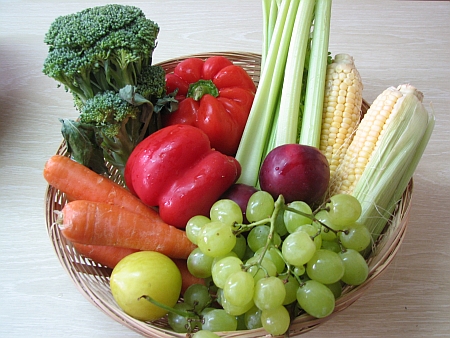Most people these days are well aware that it would be a good idea to increase their intake of fruits and vegetables.
However, no matter your level of ambition, sometimes dietary changes like this are easier said than done. Sometimes it’s not a matter of willpower, but a need for inspiration that can get in the way of increasing your intake of a certain type of food.
A lot of people look at the bigger picture of a diet high in plant foods but don’t know where to begin. What are some good ways to start increasing your intake of both fruits and vegetables?
Let’s take a look at some tips and find out.
Juice your Fruits and Vegetables
One method of increasing the number of fruits and vegetables in one’s diet that has risen in popularity is juicing.
Talk about easy – all you have to do is take your favorite veggies and fruits and pop them into a juicer and let the machine work its magic. There are juice bars located most places as well, so it’s easier than ever to pick up a tasty smoothie.
Not only is this a nice and simple way to incorporate plants into your diet, but it can also open the doors of inspiration for you and your taste buds as you look to improve your health. Certain vegetables that you might otherwise not like the taste or texture of might mix beautifully into a newly created juice blend!

You might not be able to bring yourself to eat raw kale in a salad due to its strong taste – but you might find that that same strong flavor becomes much more appealing when blended into juice with carrots, grapes, and fresh ginger root.
Maybe you don’t like the texture of blueberries and their seeds but would love to avail yourself of their antioxidant properties by tossing them into the juicer along with some other nutritious fruits.
The sky is the limit – fruits and vegetables alike will be simple and satisfying to work into your diet when you explore the possibilities of juicing.
Find Delicious Recipes
If you’re striving to ramp up your fruit and vegetable consumption but find yourself at a loss for ideas, then head for your favorite recipe book or web browser. Take some time to look through some new recipes, or cook your favorite vegetable-based dishes more often.
While you’re conducting a search for new recipes, it can certainly pay off to look through plenty of vegetarian and vegan recipes – even if you’re neither. Any vegan/veggie recipes are going to be plant-based by default, and you can always add meat to go with it if you prefer.
Vegan recipes also tend to incorporate vegetables and fruits in creative ways in order to fulfill taste and texture cravings that risk being compromised by the dietary restrictions. This means that you could discover a whole new world in terms of building bold, new flavors while being able to rely entirely on vegetables.
And again, don’t worry – if you aren’t vegetarian or vegan and don’t intend to be, you can always add in your favorite meat or dairy products just like you would any other time.
Look Into Opportunities for Healthy Alternatives
Once you’ve compiled a nice selection of appealing new recipes, and maybe some old favorites that you want to enjoy more often, consider some healthy ingredient substitutes. It’s always best to try out a new recipe as it’s originally written the first time so that you know how you feel about the final product and know what you have to work with. But once you’ve given it a try or two, it might be a good time to start experimenting!
Maybe a tried-and-true casserole could stand to have some more variety in the vegetable area. Or perhaps a tasty new stir-fry recipe you’ve tried and liked would be even better with some plantains mixed in.
Even classic dishes like macaroni and cheese or scrambled eggs can be spruced up with some onions or a select medley of other appealing veggies.
Desserts are an excellent place for healthy alternatives, and a great opportunity to up your fruit intake. Mixing come chopped berries into a reduced amount of your ice cream or yogurt can add a whole new dimension of flavor without leaving you feeling overly full, and give you a healthy boost as well.
Substituting or adding to baked goods works great too. It’s easy to substitute applesauce for oil in things like brownies, and chopped fruit or compote can be a way more flavorful cake topping than a sugary glaze.
In fact, you’re hard-pressed to find a recipe or dish that doesn’t have components that could be replaced or complemented with fruits or vegetables.
It’s undoubtedly important to include as many fruits and vegetables in your diet as possible. However, it can be tricky to work enough of these good foods in there, and some people simply don’t know where to start. Fortunately, there are plenty of ways to incorporate more fruits and vegetables into your diet, especially if you exercise a little bit of creativity.
Juicing is an absolutely wonderful way to fit both fruits and vegetables alike into your daily diet. It enables you to compact a colorful variety of healthy plant foods into a fresh, great-tasting juice – and when you juice your own drinks, you can tailor them to your own individual preferences.
Another good way to include more fruits and vegetables is to go on the hunt for some delicious recipes that make plant foods their focus. Fruits and veggies don’t have to be the only thing you eat in order to still be the star at your dinner table.
And last but not least, take any recipe you like, especially those that don’t include many fruits or vegetables, and see where you can fit them in. Substitutes and plant-based alternatives to certain ingredients, snacks, or dessert items can take you very far in terms of upping your plant food intake.


